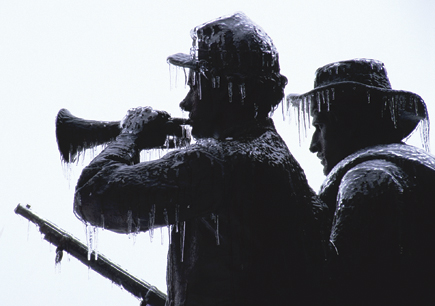Memorial Days; Chris Heisey’s Monumental Decisions Page 2
 |
|
|
 |
|
|
What also helps is his day job. Chris is a photojournalist for the Roman Catholic Diocese of Harrisburg, Pennsylvania. “I’ve worked for the church for 22 years, right out of college—first for 10 years for a Catholic hospital as a photographer and AV specialist; then I came over to the diocese 12 years ago.” His flexible schedule, plus holidays and weekends, gives him the opportunity to pursue his passion. He is co-author of two books, In the Footsteps of Grant and Lee: The Wilderness Through Cold Harbor and Gettysburg: This Hallowed Ground, and is currently working on a third collaborative effort, this one on Civil War battles in the eastern theater. In addition, Chris’ photographs are displayed at the Visitor Center at Gettysburg National Military Park.
While Chris’ knowledge of the Civil War informs his images, he realizes that not everyone will have that degree of interest in the landmarks and monuments they photograph. Still, there are things you can do to bring a different look to your pictures. One is carefully choosing your spots. “For me, Shiloh is a favorite battlefield because it feels like 1862. So I tell people to go to places that transport them back in time. And sometimes a battlefield, or a landmark, has too much traffic, too many visitors, so think about the ones that aren’t as well-known.” Then there’s the picture choice: “Don’t just go with the wide angle view. Go to extremes, like close-ups of monuments with ice or water drops on them. The rainy day may be the best day of your vacation for photography. I always try to see the landmarks in different light and weather. And I love to use filters to add drama to the images.”
 |
|
|
 |
|
|
Recalling how the Ken Burns series inspired him, Chris says, “Trying to do better—that’s the spirit of photography. I hope people will look at my photography and think, maybe I can do it better. I’m all for that.”
- Log in or register to post comments

















































